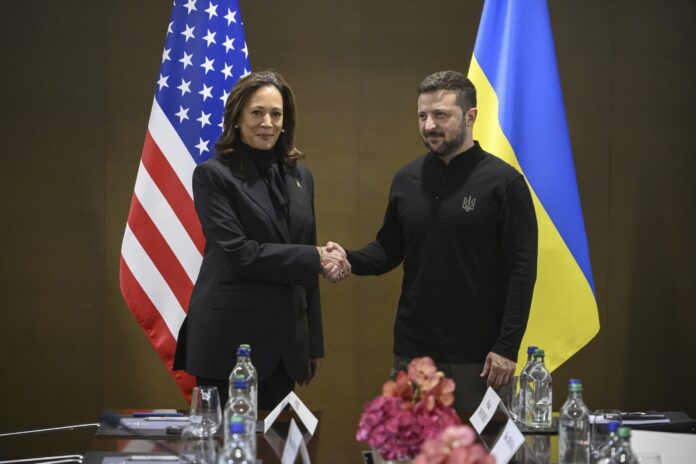NEWYou can now listen to Fox News articles!
Approximately 100 nations, primarily from the Western world, participated in the Ukraine peace summit in Switzerland this past weekend. The high level conference, requested by the Kyiv government, aimed to “jointly define a roadmap” for a peace process based on Ukrainian President Volodymyr Zelenskyy’s proposal.
At the end of May, the Russian government also signaled willingness to consider a negotiated cease-fire that would recognize the current battlefield lines. On Friday, Russian President Vladimir Putin himself declared that he would end the war if Ukraine abandoned its ambitions to join NATO and if it surrendered the four provinces in Donbass that Russia had annexed, permitting Moscow to retain control of roughly one fifth of Ukraine. Is peace between Russia and Ukraine finally achievable now that the biggest war in Europe since World War II is well into its third year?
Regretfully, having examined various intelligence indicators – the force posture and combat potential of the belligerents, their leaders’ strategic ambitions, and the intentions of their respective allies — the answer is almost certainly no. Here’s why.
WHO IS RUSSIA’S NEW DEFENSE MINISTER AND WHAT’S BEHIND PUTIN’S WARTIME CABINET RESHUFFLE?
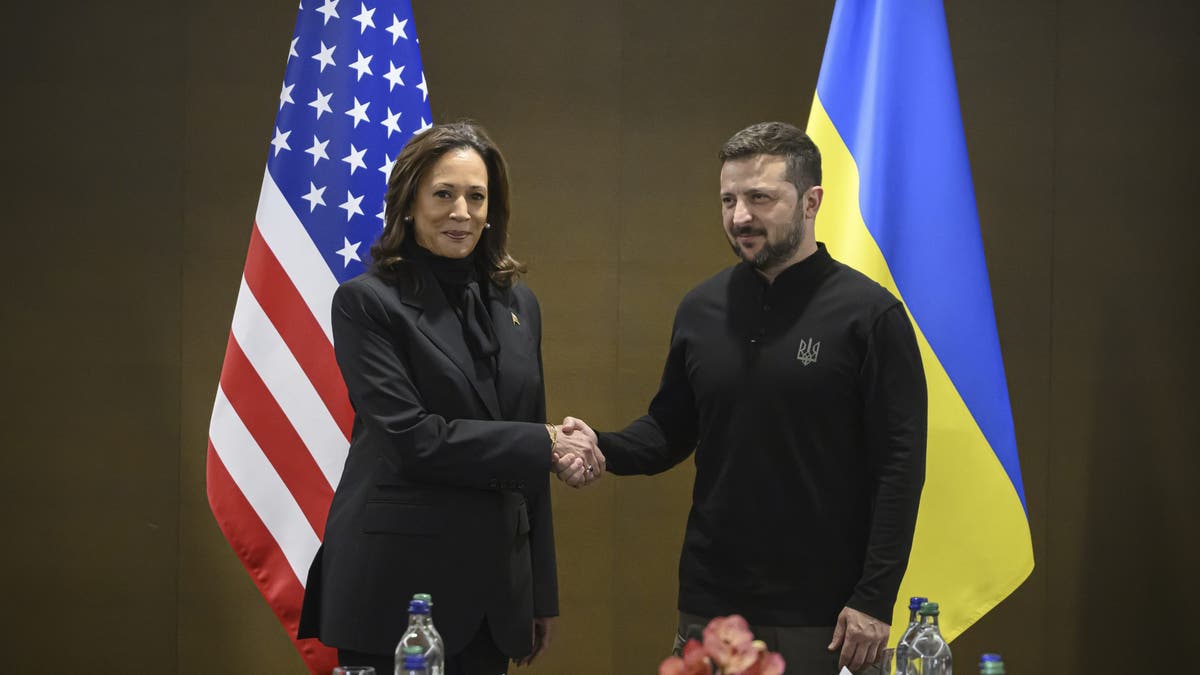
Vice President Kamala Harris shakes hands with Ukrainian President Volodymyr Zelenskyy during the Summit on Peace in Ukraine, in Obbürgen near Lucerne, Switzerland, Saturday, June 15, 2024. (Alessandro della Valle/Keystone via AP)
None of the key stakeholders in the conflict – Moscow, Kyiv, and Washington – are serious about achieving a peace settlement in Ukraine. Their actions reflect the opposite intentions and their respective positions on the conditions for peace are irreconcilable.
Putin has transitioned the Russian military and economy onto a wartime footing as he is prepared to wage a long war to keep Ukraine, which Moscow views as part of its centuries-old strategic buffer zone, against NATO, an adversarial alliance created as a direct counter to Russia’s predecessor, the USSR.
On Thursday, deputy chairman of Russia’s Security Council and Vladimir Putin’s predecessor as president, Dmitriy Medvedev, called on his countrymen to mobilize in order to inflict “maximum harm” on Western countries as payback for what the Russians view as attempts by the U.S. and NATO to secure control over the state that has deep historical, ethnic and cultural roots to Russia.
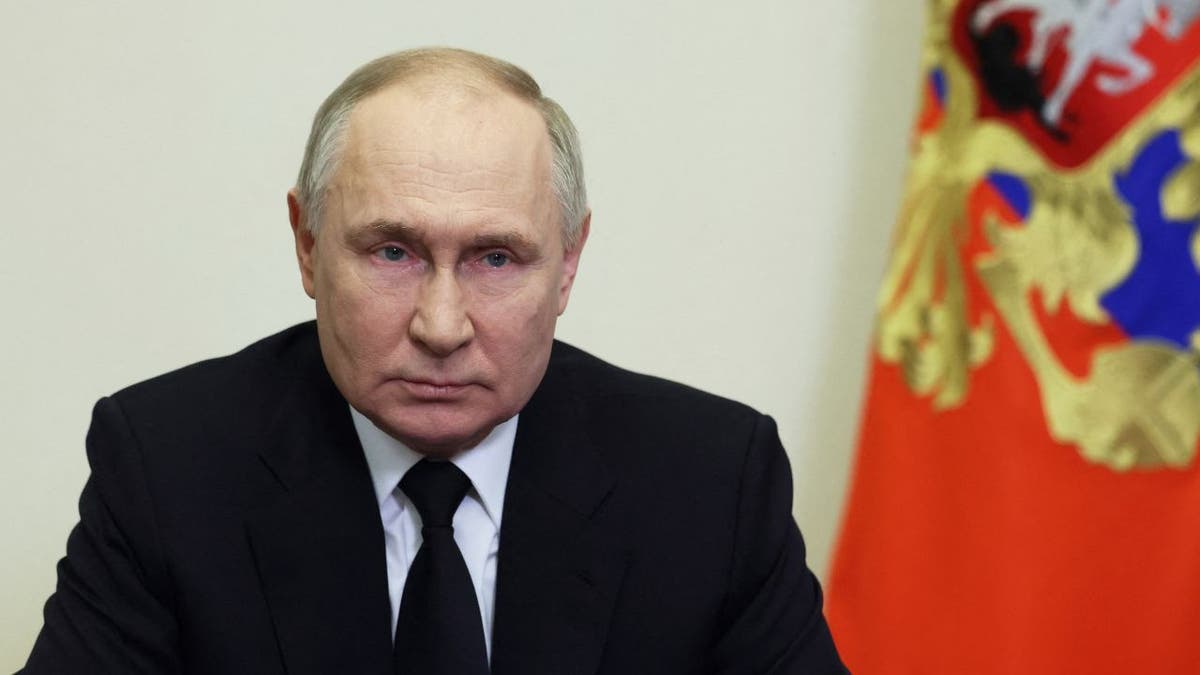
Russian President Vladimir Putin delivers his address to the nation in Moscow on March 23, 2024. (Mikhail Metzel/Pool/AFP via Getty Images)
“Harm their economies, their institutions and their rulers. Harm the well-being of their citizens, their confidence in the future,” wrote Medvedev on his official Telegram channel, which has over 1.3 million followers. Medvedev advocated targeting the U.S. and Europe’s critical infrastructure, including energy, transport, banking, social services, and the like, in order to foment disorder. He justified it as a payback for Western economic sanctions.
Russia has a formidable arsenal of cyber weapons, has been mapping access to U.S. networks for a quarter of a century and has increased the probing of our vital facilities for vulnerabilities during the last decade.
To continue a protracted grinding campaign, Putin has directed, by a decree, the Ministry of Defense to increase the armed forces by 170,000 additional personnel to the maximum strength of 1,320,000 servicemen, with 100,000 troops being sent to the front lines in the near future. He is also increasing defense spending by almost 70% in 2024 from 2023.
WHAT TO EXPECT FROM PUTIN AS RUSSIAN STRONGMAN BEGINS NEW SIX-YEAR TERM
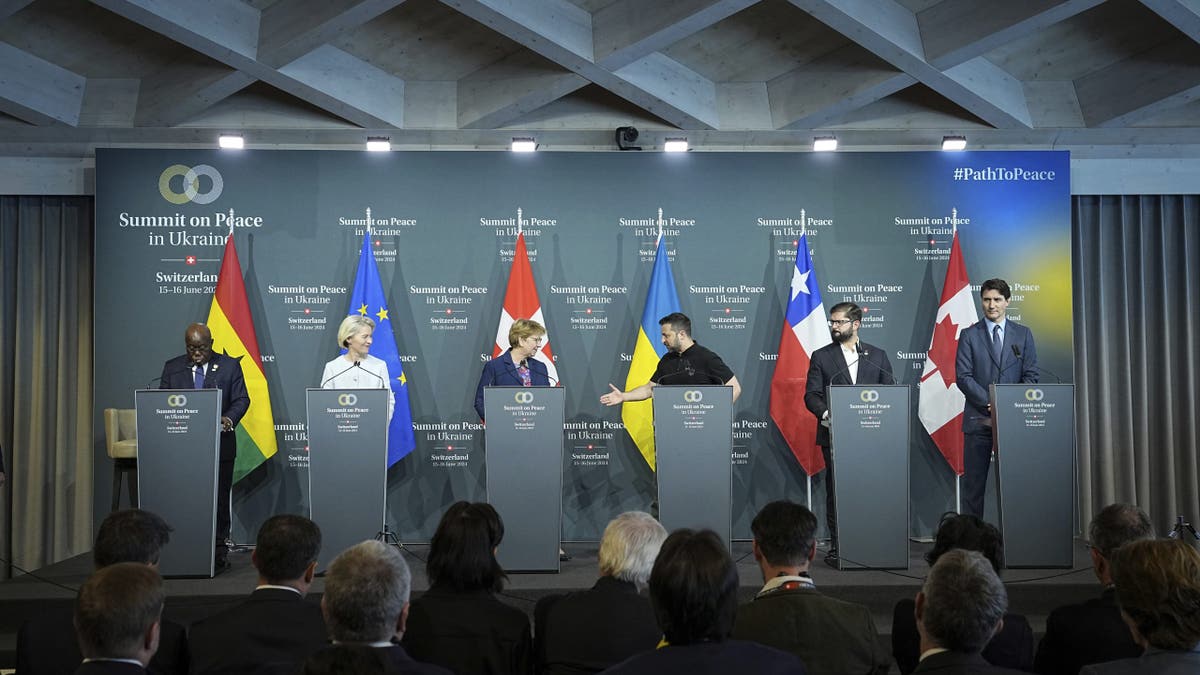
Ukrainian President Volodymyr Zelenskyy, center right, shakes hands with Swiss Federal President Viola Amherd during the closing press conference of the Ukraine peace summit in Obbürgen, Switzerland, on Sunday, June 16, 2024. Switzerland is hosting scores of world leaders this weekend to try to map out the first steps toward peace in Ukraine. (AP Photo/Laurent Cipriani)
As he embarked on his fifth six-year term as president, the Russian spymaster has reshuffled his entire cabinet to optimize the functioning of Russia’s war machine and to ensure that only loyalists are in key roles. To keep the Russian economy impervious to Western sanctions, a process that he had started seven years prior to the invasion, Putin, an attorney and economist by training, installed a new defense minister, a prominent economist with no military background.
To deter the U.S. and European nations from deploying forces into Ukraine, Putin is signaling that Russia is prepared to engage in a direct kinetic war with the West. On Thursday, on Putin’s orders, Russian nuclear forces were conducting combat drills, involving the delivery of dummy nuclear warheads to field storage points and a military airfield.

Gunners from 43rd Separate Mechanized Brigade of the armed forces of Ukraine fire at a Russian position with a 155 mm self-propelled howitzer 2C22 “Bohdana,” in the Kharkiv region, on April 21, 2024 amid the Russian invasion of Ukraine. (Photo by ANATOLII STEPANOV/AFP via Getty Images)
Russia’s war-fighting doctrine and strategy envision the employment of tactical nuclear weapons against Western targets in certain scenarios, to defend against or even preempt threats to its sovereign territory. Moscow views Crimea, which it occupied in 2014, and the newly annexed four regions as parts of Russia. Having served as a senior official in the Defense Intelligence Agency, I participated in multiple wargames. Wargames, simulating a U.S.-Russia conflict that was conducted by the U.S. intelligence community, in which I served as a senior Russia analyst, confirmed Moscow’s willingness to use nuclear weapons, in certain scenarios, if it came to a direct kinetic conflict with the United States on Russia’s periphery in Eurasia.
CLICK HERE TO GET THE OPINION NEWSLETTER

Firefighters work to extinguish a fire after a Russian attack at apartment buildings in the town of Uman, 200 kilometres (125 miles) south of Kiev, Ukraine, on Friday, April 28, 2023. (National Police of Ukraine via AP)
On the battlefield, Russia has the upper hand. Putin opened a new front, having launched a new offensive into the Kharkov region on May 10. The significant advances made by the Russian forces as Ukraine remains outmanned and outgunned has prompted Western fears that Russia may break through the current front lines.
With an approval rating of 82%, up from 71% shortly before the invasion of Ukraine, Putin is postured to continue the battle that he views as existential for him personally and for Russia.
The Biden administration, having utterly failed to deter Putin in the first place, continues to invest heavily in weakening Russia militarily and economically, albeit at the cost of Ukraine’s destruction. In a major policy reversal, President Biden recently allowed Ukraine to conduct strikes deep inside Russia using U.S.-provided weapons, probably accepting the risk of the United States getting into a direct kinetic war with nuclear Russia.
On June 7, the Pentagon announced another security package for Ukraine, valued at $225 million, to “meet its most urgent battlefield needs.” It includes “air defense interceptors; artillery systems and munitions; armored vehicles; and anti-tank weapons.” On Thursday, at the G-7 Summit in Italy, President Biden and his counterparts agreed on a plan to provide a $50 billion loan to Ukraine, using profits from frozen Russian assets. On Saturday, Vice President Kamala Harris, who represented the United States at the peace summit, pledged America’s full support for Ukraine and announced more than $1.5 billion in aid.
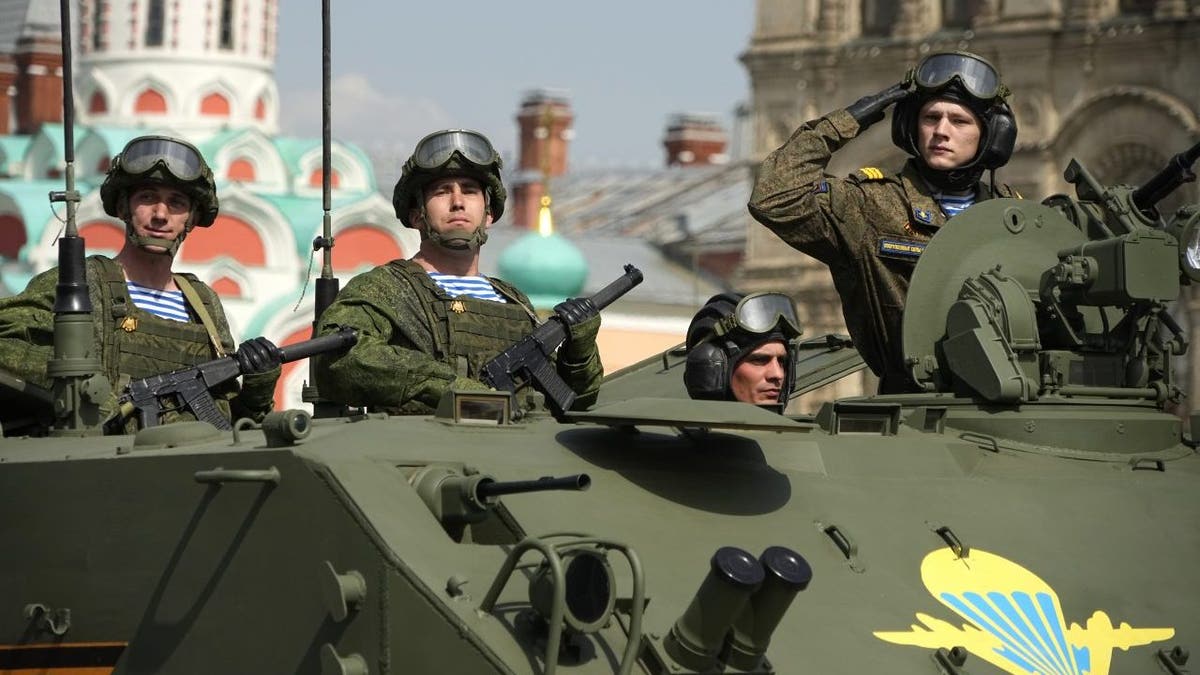
Russian army soldiers stand in a military vehicle rolling during a dress rehearsal for the Victory Day military parade in Moscow on Saturday, May 7, 2022. (AP Photo/Alexander Zemlianichenko)
On Friday, Secretary of Defense Lloyd Austin told reporters at NATO headquarters in Brussels that Putin “is in no position to dictate” peace conditions to Ukraine. On Thursday, President Biden and Zelenskyy signed a 10-year security pact between the U.S. and Ukraine. Biden is also set to announce another round of economic sanctions on Russia. Russia was not even invited to participate in the peace summit on Ukraine.
NATO is also preparing for a potential ground war with Russia, mapping out “land corridors” and drawing plans to flow U.S. and allied forces quickly through Central Europe into the front lines in the event of a full-on war with Russia. The alliance previously agreed to have 300,000 troops in a state of readiness for rapid deployment into the theater. Contingency plans stipulate five logistics points located in Italy, Turkey, Greece, Netherlands and Finland, which will play a critical role in funneling Western troops. This war planning is as specific as we’ve seen in the post-Cold War period.
In Ukraine, there is not much willingness to negotiate for peace either. Kyiv dismissed Putin’s conditions for a cease-fire as “absurd.” Ukrainian President Zelenskyy, at the close of the peace summit, stated that he would start negotiations “tomorrow” if Russia pulls out of “our territories.” Most Ukrainians continue to support the war effort, although their support of President Zelenskyy has declined.
CLICK HERE TO GET THE FOX NEWS APP
Zelenskyy — caught between the wishes of Kyiv’s elites and the strategic ambitions of Moscow and Washington, the two major geopolitical rivals that possess 90% of the world’s nuclear weapons — is not in a position to call the shots, however, when it comes to a peace settlement. Zelenskyy, whose popularity has declined from 90% after Russia’s invasion to 62% at the end of last year, has staked his entire presidency on aligning Ukraine with the West away from Moscow, joining NATO, and winning the war with Russia.
A former actor turned commander-in-chief, Zelenskyy failed to factor into his war-planning and decision calculous the dramatic disparity in combat and economic potential between Russia and Ukraine when he set his eyes on victory, setting a highly unrealistic goal. Zelenskyy is highly unlikely to call it quits and risk the loss of his status of an international hero, by ceding victory to Putin.
CLICK HERE TO READ MORE FROM REBEKAH KOFFLER
Source link




